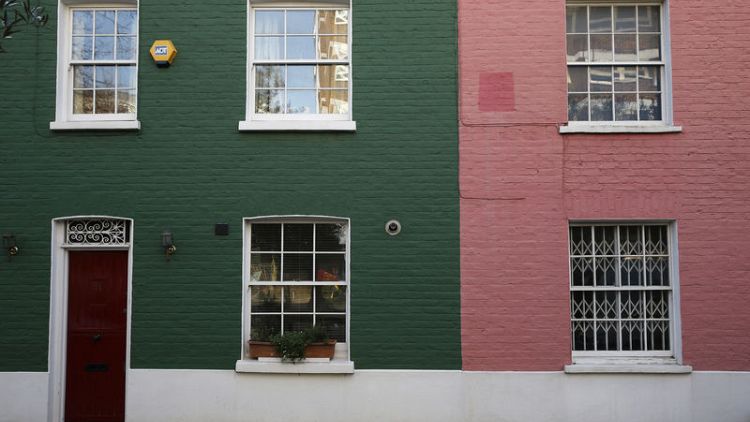By Andy Bruce and William Schomberg
LONDON (Reuters) - House prices in London fell at the fastest pace in almost 10 years in May, according to official data that also showed inflation hitting the Bank of England's 2% target for a second month running in June.
House prices in London - which have been hit by worries about Brexit and its impact on the city's attractiveness as a global finance centre - slid by 4.4% in annual terms, the Office for National Statistics (ONS) said.
That marked the biggest fall since August 2009.
Reflecting the weakness in the property market since the Brexit referendum more than three years ago, house price growth across the United Kingdom as a whole slowed to 1.2%, matching February's six-year low.
Some other surveys have suggested that the market might be borrowing out and analysts said London's dip was not likely to be followed by the rest of the country.
"The downturn in London probably isn't a sign of an impending slump elsewhere, but instead reflects the slowdown in net migration, a glut of new-build flats and valuations correcting from excessively stretched levels," said Samuel Tombs, economist at consultancy Pantheon Macroeconomics.
London house prices are now 6.4% below their July 2017 peak, a disappointment to some homeowners but a much smaller fall than the 17.8% peak-to-trough hit during the global financial crisis.
Furthermore, the current downturn in the capital represents only a small hit given that London house prices have almost doubled since the financial crisis, leaving the city unaffordable for many buyers.
Zoopla, an online property portal, said it the breadth of price falls across London's boroughs was narrowing and it expected the price declines to moderate over 2019 and 2020.
BANK OF ENGLAND UNDER NO PRESSURE ON INFLATION
Separate data from the ONS published on Wednesday showed not only stable consumer price inflation at 2.0%, but also weaker pipeline price pressures faced by British factories.
"While the UK consumer price inflation backdrop appears relatively benign, the fact that wage growth is holding up suggests it's too early to be thinking about rate cuts," ING economist James Smith said.
"But the increasing uncertainty surrounding Brexit suggests policy tightening is equally unlikely this year."
Some investors think the BoE's next move might be to cut rates as the prospect of an economically damaging no-deal Brexit grows and U.S.-China trade tensions slow the global economy.
On the other hand, households, whose spending drives Britain's economy, are have been helped by wages rising at their fastest pace in a decade, with unemployment at a 44-year low, as well as by modest inflation.
The ONS said producer input costs, which eventually feed through into prices on the high street, fell 0.3% in annual terms in June, the first decline in three years.
The pound and British government bonds were little moved by the data, which aside from weaker-than-expected factory input cost readings were as expected in a Reuters poll of economists.
(For a graphic on 'UK house prices', click https://tmsnrt.rs/32t22y4)
(Editing by Angus MacSwan)



